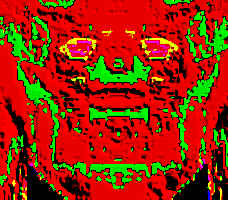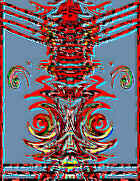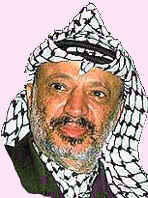 ^
2004 Rahman 'Abd Arra'uf al-Qudwah “Yasir
'Arafat”, chairman of the PLO,
head ^
2004 Rahman 'Abd Arra'uf al-Qudwah “Yasir
'Arafat”, chairman of the PLO,
head
of the Palestinian Authority. 'Arafat was born on 24 August 1929, according
to a birth certificate registered in Cairo, Egypt. Some sources, however,
have supported 'Arafat's claim to have been born in Jerusalem on 04 August
1929, and still others have given Gaza, Palestine, as his birthplace.
“Yasir 'Arafat” is the byname of Muhammad
'Abd ar-Ra'uf al-Qudwah al-Husayni, president (from 1996) of the Palestinian
Authority, chairman (from 1969) of the Palestine Liberation Organization
(PLO), and leader of Fatah, the largest of the constituent PLO groups. In
1993 he led the PLO to a peace agreement with the Israeli government. 'Arafat
and Yitzhak Rabin [01 Mar 1922 – 04 Nov 1995]
and Shimon Peres [16 Aug 1923~] of Israel were jointly awarded the Nobel
Prize for Peace in 1994.
'Arafat may
have assumed that name [my guess] from Jabal (“Mount”) 'Arafat,
near Mecca, where pilgrims hear a sermon and spend an afternoon during the
hajj. (According to the Palestinian authority, he was born on 04 August
1929).
His mother was related to the
anti-Zionist grand mufti of Jerusalem, Amin al-Husayni [1897 – 04
Jul 1974]. Arafat graduated from the University of Cairo as a civil engineer.
In Egypt he had joined the Muslim Brotherhood and the Union of Palestinian
Students, of which he was president during 1952-1956.
After
participating in the 1956 war with Israel as an Egyptian officer, Arafat
worked as an engineer in Kuwait, where he co-founded Al-Fatah, which would
become the military wing of the Palestinian Liberation Organization. Arafat
became chairman of the PLO in 1968, commander in chief of the Palestinian
Revolutionary Forces in 1971, head of the PLO's political department in
1973.
At the end of August 1982, the
Israeli invasion of Lebanon forced Arafat to move his headquarters from
Beirut to Tunisia, he moved them to Baghdad in 1987. On 15 November 1982
the State of Palestine was proclaimed (in exile) and on 02 April 1989, Arafat
became its president.
On 13 December
1993, in Washington, Arafat signed a peace accord with Israel's prime minister
Yitzhak Rabin, establishing the Palestinian National Authority with limited
authority on the West Bank and in the Gaza Strip. Arafat became its president,
confirmed by a general election on 30 March 1989. Arafat, Rabin, and Israeli
foreign minister Shimon Peres received the 1994
Nobel Peace Prize “for their efforts to create peace in the Middle
East”.
'Arafat was one of seven children
of a well-to-do merchant whose wife was related to the anti-Zionist grand
mufti of Jerusalem, Amin al-Husayni. The date and place of 'Arafat's birth
are disputed. A birth certificate registered in Cairo, Egypt, gives 24 August
1929. Some sources, however, have supported 'Arafat's claim to have been
born in Jerusalem on 04 August 1929, and still others have given Gaza, Palestine,
as his birthplace. 'Arafat attended the University of Cairo, graduating
as a civil engineer. He joined the Muslim Brotherhood and the Union of Palestinian
Students, of which he became president (1952–1956), and was commissioned
into the Egyptian army. In 1956 he served in the Suez campaign.
After Suez, 'Arafat went to Kuwait, where he worked as an engineer and set
up his own contracting firm. In Kuwait he helped found Fatah, which was
to become the leading military component of the PLO. After being named chairman
of the PLO in 1969, he became commander in chief of the Palestinian Revolutionary
Forces in 1971 and, two years later, head of the PLO's political department.
Subsequently, he directed his efforts increasingly toward political persuasion
rather than confrontation and terrorism against Israel. In November 1974
'Arafat became the first representative of a nongovernmental organization,
the PLO, to address a plenary session of the UN General Assembly.
In 1982 'Arafat became the target of criticism from Syria and from various
Syrian-supported factions within the PLO. The criticisms escalated after
the Israeli invasion of Lebanon forced 'Arafat to abandon his Beirut headquarters
at the end of August 1982 and set up a new base in Tunisia; he shifted to
Baghdad, Iraq, in 1987. 'Arafat was subsequently able to reaffirm his leadership
as the split in the PLO's ranks healed.
On 02 April 1989, 'Arafat was elected by the Central Council of the Palestine
National Council (the governing body of the PLO) to be the president of
a hypothetical Palestinian state. In 1993 'Arafat took a further step toward
peace when, as head of the PLO, he formally recognized Israel's right to
exist and helped negotiate the Israel-PLO accord, which envisaged the gradual
implementation of Palestinian self-rule in the West Bank and Gaza Strip
over a five-year period. 'Arafat began directing Palestinian self-rule in
1994, and in 1996 he was elected president of the Palestinian Authority,
which governed Palestinian-controlled areas of the West Bank and the Gaza
Strip.
In mid-1996 Israeli-Palestinian
relations became acrimonious with the election of Israeli Prime Minister
Benjamin Netanyahu [21 Oct 1949~], who favored a slower transition (if any)
to self-rule. Growing distrust between 'Arafat and Netanyahu resulted in
a 19-month-long deadlock, and in 1998 US President Bill Clinton [19
Aug 1946~] intervened, arranging a summit meeting with the two leaders.
The resulting Wye Memorandum detailed the steps to be taken by Israel and
Palestine to complete the peace process. 'Arafat pledged to continue the
process with Netanyahu's successor, Ehud Barak [12 Feb 1942~]. 
Key dates in Yasser Arafat's life:
04 Aug or 24 Aug 1929: Born in Cairo, Jerusalem, or Gaza; fifth child of
Palestinian merchant Abdel Raouf al-Qudwa al-Husseini.
1933: Mother Zahwa dies. Arafat and infant brother Fathi sent to Jerusalem
to live with uncle.
1949: Moves back to Cairo; forms Palestinian Students' League.
August 1956: Attends international student congress in Prague, Czechoslovakia,
secures membership for Palestine. For first time, wears Palestinian headdress,
or keffiyeh, that becomes his trademark.
01 Jan 1965: Forms Fatah guerrilla movement; two days later attempts first
attack on Israel, abortive bombing of water canal in Galilee.
21 Mar 1968: Israeli army attack on PLO base at Karameh, Jordan, inflicts
heavy losses, but seen as victory for Arafat and his group; thousands join
PLO.
04 Feb 1969: Arafat takes over PLO chairmanship, transforms it into dynamic
force that makes Palestinian cause known worldwide.
13 Nov 1974: Arafat addresses UN General Assembly.
06 Jun 1982: Israel invades Lebanon to crush PLO, forcing Arafat and loyalists
to flee Beirut.
01 Oct 1985: Arafat narrowly escapes death in Israeli air raid on PLO headquarters
in Tunis, Tunisia.
16 Apr 1988: Khalil al-Wazir, Arafat's military commander, also known as
Abu Jihad, assassinated in Tunis; Israel blamed.
12 Dec 1988: Arafat accepts Israel's right to exist, renounces terrorism.
02 Aug 1990: Iraq invades Kuwait; Arafat stupidly supports Saddam Hussein,
resulting in PLO's isolation.
November 1991: Arafat secretly marries secretary Suha Tawil, 28, in Tunis.
Their daughter Zahwa is born on 24 July 1995, in Paris.
07 Apr 1992: Arafat rescued after plane crash lands in Libyan desert during
sandstorm, killing two pilots and engineer and leaving Arafat bruised and
shaken.
1344 Sep 1993: Israel and PLO sign accord on Palestinian autonomy in Oslo,
Norway, giving Arafat control of most of Gaza Strip and 27% of West Bank.
Arafat shakes hands with Israeli Prime Minister Yitzhak Rabin on White House
lawn.
01 Jul 1994: Returning from exile, a triumphant Arafat sets foot on Palestinian
soil for the first time in 26 years.
10 Dec 1994: Arafat receives Nobel Peace Prize, along with Rabin and Israeli
Foreign Minister Shimon Peres.
04 Nov 1995: Ultranationalist Jew assassinates Rabin at peace rally in Tel
Aviv, Israel.
09 Nov 1995: Arafat makes first visit to Israel in secret trip to offer
condolences to Rabin's widow.
20 Jan 1996: Arafat elected president of Palestinian Authority in first
Palestinian elections.
15 Jan 1997: Arafat and Israeli Prime Minister Benjamin Netanyahu sign accord
on Israeli pullout from 80% of West Bank city of Hebron.
23 Oct 1998: Israeli and Palestinian leaders meeting at Wye River, Maryland,
agree on interim land-for-peace deal on West Bank.
11 Jul 2000: Seeking final peace deal, US President Clinton convenes "Camp
David II" and sequesters Israeli Prime Minister Ehud Barak and Arafat
for nine days. Afterward, White House declares summit failure.
28 Sep 2000: Israel's then opposition leader, Ariel Sharon, provocatively
visits Jerusalem shrine holy to Jews (Temple Mount) and Muslims (al-Aqsa
Mosque), leading to clashes that escalate into second Palestinian intifadah.
03 Dec 2001: After three suicide bombings, Israel destroys Arafat's three
helicopters in Gaza City, grounding him and effectively confining him to
West Bank town of Ramallah, while making him more popular among Palestinians.
18 Jan 2002: Two Israeli tanks and armored personnel carrier park outside
Arafat's Ramallah headquarters, confining him to office complex after Palestinian
gunman bursts into banquet hall and kills six Israelis. In three ensuing
military sieges, compound's walls torn down, along with most buildings,
except for Arafat's three-story tan stucco office.
27 Mar 2002: Palestinian suicide bomber kills 29 people at Passover holiday
meal at Park Hotel in Netanya, prompting Israeli incursion into West Bank.
29 March 2002: Israeli Cabinet declares Arafat an "enemy." Troops
seize Ramallah, including most of Arafat's headquarters compound, further
pinning in once globe-trotting leader.
02 Apr 2002: Arafat, responding to Israeli Prime Minister Ariel Sharon's
offer of permanent exile, says he would rather die than leave West Bank.
24 Jun 2002: Siding with Sharon, USurper President Bush stupidly calls on
Palestinians to replace Arafat as leader.
29 Apr 2003: Palestinian parliament confirms Arafat's deputy, Mahmoud Abbas,
as first Palestinian prime minister, appointment pushed for by United States
and Israel in a counterproductive effort to sideline Arafat.
04 Jun 2003: At first major Israeli-Palestinian summit without Arafat, Sharon
and Bush launch "road map" peace plan, which allegedly aims to
end fighting and create Palestinian state by 2005.
06 Sep 2003: Abbas, weakened by power struggle with Arafat, resigns and
is replaced by parliament speaker Ahmed Qureia.
29 Oct 2004: Having been seriously ill for two weeks, and having collapsed
into unconsciousness for 10 minutes two days earlier, Arafat is flown to
Paris for diagnosis and treatment. The diagnostic procedures give no result,
but may have aggravated 'Arafat's condition. He slips into a coma and dies
in the evening of 10 November 2004.
— Yasir Arafat, político palestino
Mohammed
Abed Ar´ouf Arafat nació el 24 de agosto de 1929, en Gaza, Palestina, entonces
dominio británico. Estudió en la Universidad de El Cairo (1952-1956), donde
llegó a ser presidente de la Asociación General de los estudiantes palestinos.
Después trabajó como ingeniero en Kuwait. Colaboró en la fundación del movimiento
"Al-Fatah", en 1958, el más importante de los grupos guerrilleros reivindicadores
del territorio de Palestina ocupado por Israel, del que, posteriormente,
se convertiría en portavoz y líder. En 1968, después de la derrota de los
árabes frente a Israel en la denominada "Guerra de los Siete Días", surge
con nueva fuerza política la Organización para la Liberación de Palestina
(OLP), fundada en 1964 por Ahmed es-Suqueiri, y controlada, ahora, por Al-Fatah.
En 1969, es elegido presidente del comité ejecutivo de la OLP, representando
al sector moderado de esta Organización. En 1982 Israel invade el Líbano,
derrota a los guerrilleros palestinos instalados allí y expulsa a Arafat,
que traslada su cuartel general a Túnez. Dos años más tarde, presenta su
dimisión ante el Congreso Nacional Palestino, pero es rechazada, por lo
que refuerza su figura dentro de la OLP. A partir de este momento, estalla
en los territorios ocupados de Gaza y Cisjordania la revuelta conocida con
el nombre de la "Intifada", que se va incrementando hasta 1988. A finales
de este año, Arafat proclama la primera Constitución del Estado Palestino,
en una ceremonia celebrada en Argel durante la reunión del Consejo Nacional.
El 13 Dec 1988 del mismo año, Arafat
interviene ante la Asamblea General de la ONU, en Ginebra, con una rama
de olivo y una piedra en sus manos, como presidente del nuevo Estado de
Palestina. En 1989, durante la celebración de un congreso del grupo Al-Fatah,
se hace un llamamiento a la lucha armada para poner fin a la ocupación de
Israel de los territorios palestinos, y se nombra por unanimidad a Yasser
Arafat presidente del Comité Central de Al-Fatah.
El apoyo prestado a Saddam Hussein en la crisis del Golfo, en 1990, le valió
a Arafat la pérdida de la confianza internacional, pronto restablecida al
apoyar la participación de Palestina en la Conferencia de Paz de Oriente
Medio celebrada, en su primera fase, en Madrid, y la segunda, en Washington,
en 1991. A pesar de ser criticado y acosado por los palestinos más exaltados
por utilizar la vía negociadora para conseguir el reconocimiento del Estado
de Palestina, Yasser Arafat e Itzhak Rabin, en presencia de Bill Clinton,
firmaron la paz en Washington, el 13 Dec 1993, consiguiendo así el reconocimiento
de la autonomía de Palestina. A pesar de ello, prosiguen las manifestaciones
de los radicales integristas que mantienen la inestabilidad en un país en
el que Yasser Arafat sigue siendo el líder más aclamado por el pueblo. En
1994 le fue otorgado el Premio Nobel de la Paz.
|
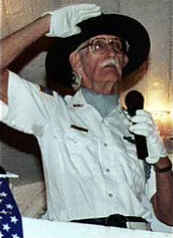 2004
William Hammond, 80 [< photo], accidentally run
over by a van backing up over him as he was lining up veterans for the Veterans
Day parade in Whitman, Massachusetts. The van was driven by a friend and
owned by the local Veterans of Foreign Wars. Hammond, a contractor in Abington,
Massachusetts, was a decorated World War II veteran who fought in the Battle
of the Bulge (16 Dec 1944 - 16 Jan 1945). He was captain of the color guard
for the parade.
2004
William Hammond, 80 [< photo], accidentally run
over by a van backing up over him as he was lining up veterans for the Veterans
Day parade in Whitman, Massachusetts. The van was driven by a friend and
owned by the local Veterans of Foreign Wars. Hammond, a contractor in Abington,
Massachusetts, was a decorated World War II veteran who fought in the Battle
of the Bulge (16 Dec 1944 - 16 Jan 1945). He was captain of the color guard
for the parade.

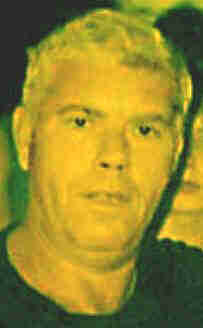 2003::
6 Iraqis including the terrorist who was placing a bomb on the
side of a street in British-occupied Basra, Iraq, and which explodes apparently
prematurely, destroying a minibus. Four Iraquis are injured.
2003::
6 Iraqis including the terrorist who was placing a bomb on the
side of a street in British-occupied Basra, Iraq, and which explodes apparently
prematurely, destroying a minibus. Four Iraquis are injured. 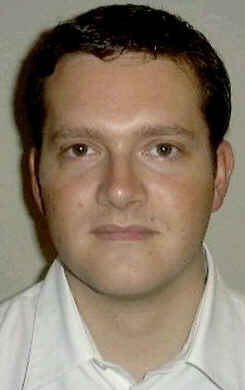 2001
Johanne Sutton of Radio France Internationale, Pierre Billaud
[< photo] of RTL Radio, and Volker Handloik,
a freelance reporter for Stern newsmagazine. Near Taloqan, capital
of Takhar in Afghanistan, in the dark after nightfall, they were in a group
of foreign correspondents being taken by the Northern Alliance to see trenches
falsely said to have been abandoned by the Taliban.
2001
Johanne Sutton of Radio France Internationale, Pierre Billaud
[< photo] of RTL Radio, and Volker Handloik,
a freelance reporter for Stern newsmagazine. Near Taloqan, capital
of Takhar in Afghanistan, in the dark after nightfall, they were in a group
of foreign correspondents being taken by the Northern Alliance to see trenches
falsely said to have been abandoned by the Taliban.
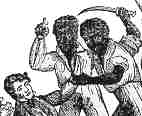
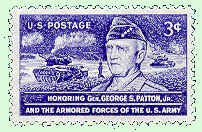 1885
1885
